-
 Bitcoin
Bitcoin $76,444.7530
-3.77% -
 Ethereum
Ethereum $1,473.8355
-5.46% -
 Tether USDt
Tether USDt $0.9991
-0.08% -
 XRP
XRP $1.7965
-5.51% -
 BNB
BNB $553.4919
-0.36% -
 USDC
USDC $0.9999
-0.02% -
 Solana
Solana $105.2981
-1.74% -
 TRON
TRON $0.2303
0.81% -
 Dogecoin
Dogecoin $0.1422
-4.62% -
 Cardano
Cardano $0.5587
-4.41% -
 UNUS SED LEO
UNUS SED LEO $8.9866
1.01% -
 Toncoin
Toncoin $2.9933
-4.74% -
 Chainlink
Chainlink $10.9113
-4.81% -
 Stellar
Stellar $0.2215
-4.76% -
 Avalanche
Avalanche $16.1163
-3.29% -
 Sui
Sui $1.9371
-3.89% -
 Shiba Inu
Shiba Inu $0.0...01065
-6.69% -
 Hedera
Hedera $0.1469
-3.29% -
 MANTRA
MANTRA $6.2058
-1.53% -
 Dai
Dai $1.0000
0.01% -
 Bitcoin Cash
Bitcoin Cash $269.3457
-2.08% -
 Polkadot
Polkadot $3.3773
-5.87% -
 Litecoin
Litecoin $69.2204
-2.50% -
 Ethena USDe
Ethena USDe $0.9986
-0.01% -
 Bitget Token
Bitget Token $4.0180
-3.25% -
 Pi
Pi $0.5649
-4.50% -
 Hyperliquid
Hyperliquid $11.1928
-2.80% -
 Monero
Monero $195.3885
-4.41% -
 OKB
OKB $50.9235
-0.59% -
 Uniswap
Uniswap $4.7688
-6.95%
What should I do if the Coinbase Wallet transaction record is not updated?
If your Coinbase Wallet transaction record isn't updating, try refreshing the app, checking your internet, and clearing cache; contact support if issues persist.
Apr 07, 2025 at 04:49 am

If you're experiencing issues with the Coinbase Wallet transaction record not updating, it can be frustrating and concerning. This article will guide you through the steps to troubleshoot and resolve this issue, ensuring that your transaction records are accurately reflected in your wallet.
Understanding Coinbase Wallet Transaction Records
Coinbase Wallet is a popular platform for managing various cryptocurrencies. The transaction records within the wallet are crucial for tracking your financial activities, such as sending and receiving cryptocurrencies. These records should update in real-time, but sometimes delays or errors can occur.
Common Reasons for Transaction Record Delays
Several factors can cause delays in updating your transaction records on Coinbase Wallet. Some of the most common reasons include:
- Network Congestion: High traffic on the blockchain network can lead to slower transaction processing times.
- Pending Transactions: If a transaction is still pending, it may not yet be reflected in your wallet's records.
- Technical Glitches: Temporary issues with Coinbase's servers or your internet connection can cause delays.
- User Error: Incorrectly entered transaction details or using the wrong wallet address can lead to discrepancies.
Steps to Check Transaction Status
Before taking any action, it's important to verify the status of your transaction. Here's how you can do it:
- Check the Transaction Hash: Every transaction on the blockchain has a unique identifier called a transaction hash. You can find this hash in your Coinbase Wallet under the transaction details.
- Use a Blockchain Explorer: Websites like Etherscan or Blockchain.com allow you to enter the transaction hash and view its status on the blockchain. If the transaction is confirmed on the blockchain but not reflected in your wallet, there might be an issue with Coinbase Wallet.
- Contact Coinbase Support: If the transaction is confirmed on the blockchain but not in your wallet, reach out to Coinbase support for assistance.
Troubleshooting Steps to Update Transaction Records
If your transaction record is not updating, follow these steps to troubleshoot the issue:
- Refresh Your Wallet: Sometimes, simply refreshing your wallet can resolve the issue. Close and reopen the Coinbase Wallet app or refresh the page if you're using the web version.
- Check Your Internet Connection: Ensure that your internet connection is stable. A poor connection can prevent your wallet from updating properly.
- Clear Cache and Cookies: If you're using the web version of Coinbase Wallet, clearing your browser's cache and cookies can help resolve display issues.
- Update the App: Make sure you're using the latest version of the Coinbase Wallet app. Outdated versions can sometimes cause issues with transaction records.
- Log Out and Log Back In: Logging out of your Coinbase Wallet and then logging back in can sometimes refresh your transaction records.
Advanced Troubleshooting Techniques
If the basic troubleshooting steps don't resolve the issue, you may need to take more advanced steps:
- Check for Blockchain Forks: In rare cases, a blockchain fork can cause discrepancies in transaction records. Research if there have been any recent forks on the blockchain you're using.
- Verify Transaction Details: Double-check the transaction details, including the recipient's address and the amount sent. Any errors here can lead to issues with the transaction record.
- Use a Different Device: Try accessing your Coinbase Wallet from a different device to see if the issue persists. This can help determine if the problem is device-specific.
Contacting Coinbase Support
If none of the above steps resolve the issue, it's time to contact Coinbase support. Here's how you can do it:
- Visit the Coinbase Support Page: Go to the Coinbase website and navigate to the support section.
- Submit a Support Ticket: Fill out the support ticket form with detailed information about your issue, including the transaction hash and any error messages you've encountered.
- Wait for a Response: Coinbase support will review your ticket and respond with further instructions or a resolution.
Frequently Asked Questions
Q: How long does it usually take for a transaction to be reflected in Coinbase Wallet?
A: The time it takes for a transaction to be reflected in Coinbase Wallet can vary depending on the blockchain network's congestion and the type of cryptocurrency. Generally, transactions can take anywhere from a few minutes to several hours.
Q: Can I cancel a transaction if it's not showing up in my Coinbase Wallet?
A: Once a transaction is sent to the blockchain, it cannot be canceled. If the transaction is not showing up in your wallet, follow the troubleshooting steps mentioned above to resolve the issue.
Q: Will Coinbase Wallet notify me if there's an issue with my transaction?
A: Coinbase Wallet typically sends notifications for completed transactions, but it may not always notify you of issues. It's important to regularly check your transaction records and follow up with support if you notice any discrepancies.
Q: Is it safe to use Coinbase Wallet if I'm experiencing transaction record issues?
A: While experiencing transaction record issues can be concerning, Coinbase Wallet is generally a secure platform. However, if you're unsure about the safety of your funds, consider transferring them to a different wallet until the issue is resolved.
Disclaimer:info@kdj.com
The information provided is not trading advice. kdj.com does not assume any responsibility for any investments made based on the information provided in this article. Cryptocurrencies are highly volatile and it is highly recommended that you invest with caution after thorough research!
If you believe that the content used on this website infringes your copyright, please contact us immediately (info@kdj.com) and we will delete it promptly.
- "Cardano (ADA) Price Could Dip Below $0.60, Following Previous Market Cycle"
- 2025-04-09 05:10:12
- BONK, the well-known meme coin, has risen over 35% in the last week, attracting meme coin investors in the market. So, what caused this rally?
- 2025-04-09 05:10:12
- Bitcoin (BTC) Investors May Not Exactly Feel It, but BTC Has Been a Relatively Good Bet
- 2025-04-09 05:05:12
- Donald's Bitcoin (DONBTC) Could Turn Early Investors into Multi-Millionaires, Like Shiba Inu (SHIB) and Dogecoin (DOGE) Did
- 2025-04-09 05:05:12
- 6 Upcoming Kraken Listings That Could Be the Next Big Thing in Crypto
- 2025-04-09 05:00:13
- COTI Unveils New Privacy-Focused Blockchain to Reshape Web3 Transactions
- 2025-04-09 05:00:13
Related knowledge
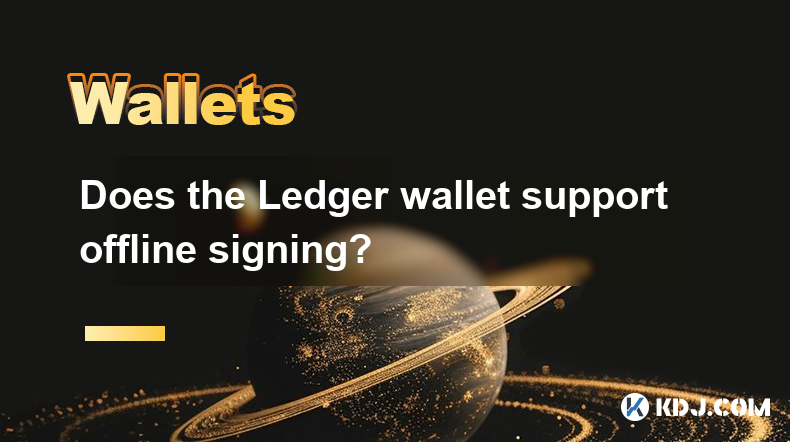
Does the Ledger wallet support offline signing?
Apr 09,2025 at 04:49am
Introduction to Ledger Wallet and Offline SigningThe Ledger wallet is a popular hardware wallet used by cryptocurrency enthusiasts to securely store their digital assets. One of the key features that users often inquire about is offline signing. Offline signing, also known as cold signing, is a security measure that allows users to sign transactions wit...
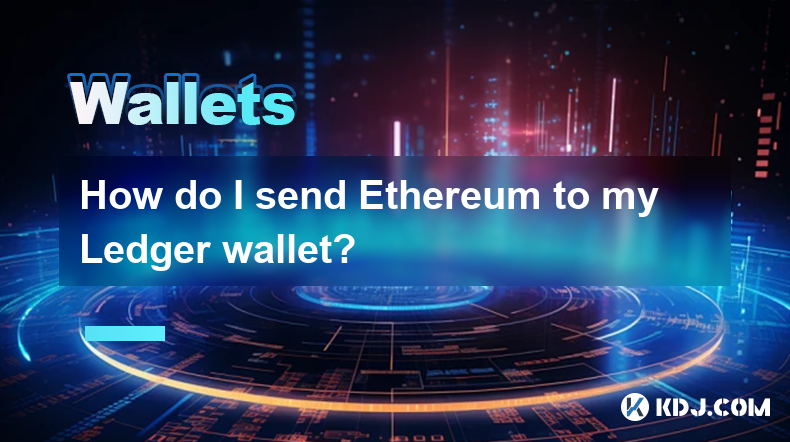
How do I send Ethereum to my Ledger wallet?
Apr 09,2025 at 03:21am
Sending Ethereum to your Ledger wallet involves a few straightforward steps, but it's crucial to follow them carefully to ensure the security of your funds. In this guide, we'll walk you through the process of transferring Ethereum to your Ledger wallet, ensuring that you understand each step and the necessary precautions. Preparing Your Ledger WalletBe...
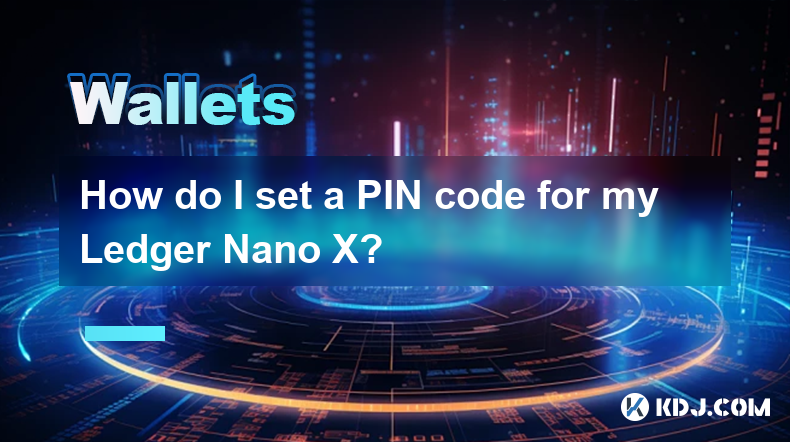
How do I set a PIN code for my Ledger Nano X?
Apr 08,2025 at 11:14pm
Setting a PIN code for your Ledger Nano X is a crucial step in securing your cryptocurrency assets. The PIN code acts as a primary layer of security, ensuring that only you can access your device. In this article, we will guide you through the process of setting up a PIN code on your Ledger Nano X, ensuring that you follow each step meticulously to main...
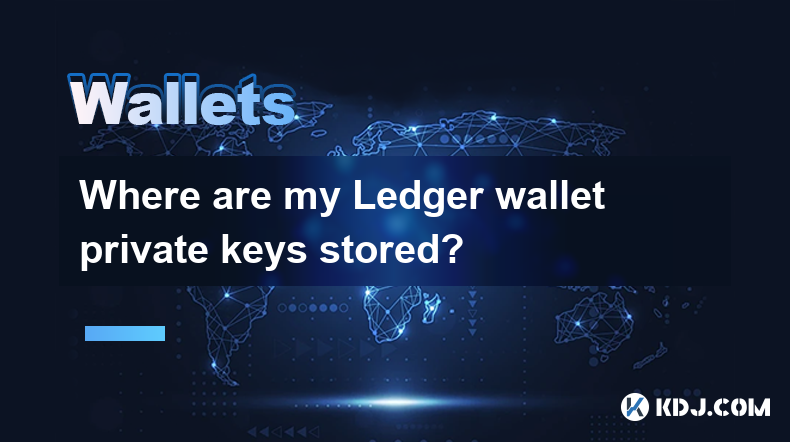
Where are my Ledger wallet private keys stored?
Apr 08,2025 at 10:35pm
When using a Ledger hardware wallet, one of the most critical aspects to understand is the storage and management of your private keys. This article will delve into the specifics of where your Ledger wallet private keys are stored, ensuring you have a comprehensive understanding of their security and accessibility. Understanding Private Keys in Ledger W...
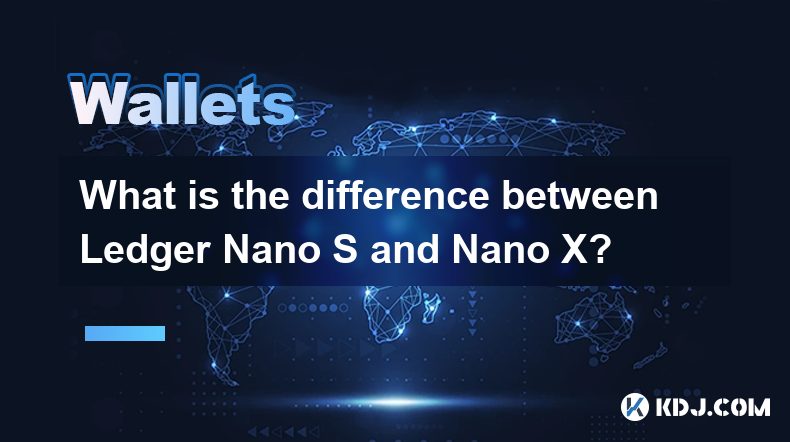
What is the difference between Ledger Nano S and Nano X?
Apr 09,2025 at 12:49am
When it comes to securing your cryptocurrencies, hardware wallets are often recommended as the safest option. Among the most popular hardware wallets are the Ledger Nano S and Ledger Nano X. Both devices are produced by Ledger, a well-known company in the cryptocurrency security industry. This article will delve into the differences between these two de...

How do I enable the Shield Transaction feature on Trezor?
Apr 08,2025 at 10:28pm
Enabling the Shield Transaction feature on Trezor involves a series of steps that allow you to enhance the privacy of your cryptocurrency transactions. This feature is particularly useful for users who want to protect their transaction history from being easily traced on the blockchain. In this article, we will guide you through the process of enabling ...

Does the Ledger wallet support offline signing?
Apr 09,2025 at 04:49am
Introduction to Ledger Wallet and Offline SigningThe Ledger wallet is a popular hardware wallet used by cryptocurrency enthusiasts to securely store their digital assets. One of the key features that users often inquire about is offline signing. Offline signing, also known as cold signing, is a security measure that allows users to sign transactions wit...

How do I send Ethereum to my Ledger wallet?
Apr 09,2025 at 03:21am
Sending Ethereum to your Ledger wallet involves a few straightforward steps, but it's crucial to follow them carefully to ensure the security of your funds. In this guide, we'll walk you through the process of transferring Ethereum to your Ledger wallet, ensuring that you understand each step and the necessary precautions. Preparing Your Ledger WalletBe...

How do I set a PIN code for my Ledger Nano X?
Apr 08,2025 at 11:14pm
Setting a PIN code for your Ledger Nano X is a crucial step in securing your cryptocurrency assets. The PIN code acts as a primary layer of security, ensuring that only you can access your device. In this article, we will guide you through the process of setting up a PIN code on your Ledger Nano X, ensuring that you follow each step meticulously to main...

Where are my Ledger wallet private keys stored?
Apr 08,2025 at 10:35pm
When using a Ledger hardware wallet, one of the most critical aspects to understand is the storage and management of your private keys. This article will delve into the specifics of where your Ledger wallet private keys are stored, ensuring you have a comprehensive understanding of their security and accessibility. Understanding Private Keys in Ledger W...

What is the difference between Ledger Nano S and Nano X?
Apr 09,2025 at 12:49am
When it comes to securing your cryptocurrencies, hardware wallets are often recommended as the safest option. Among the most popular hardware wallets are the Ledger Nano S and Ledger Nano X. Both devices are produced by Ledger, a well-known company in the cryptocurrency security industry. This article will delve into the differences between these two de...

How do I enable the Shield Transaction feature on Trezor?
Apr 08,2025 at 10:28pm
Enabling the Shield Transaction feature on Trezor involves a series of steps that allow you to enhance the privacy of your cryptocurrency transactions. This feature is particularly useful for users who want to protect their transaction history from being easily traced on the blockchain. In this article, we will guide you through the process of enabling ...
See all articles






















































































